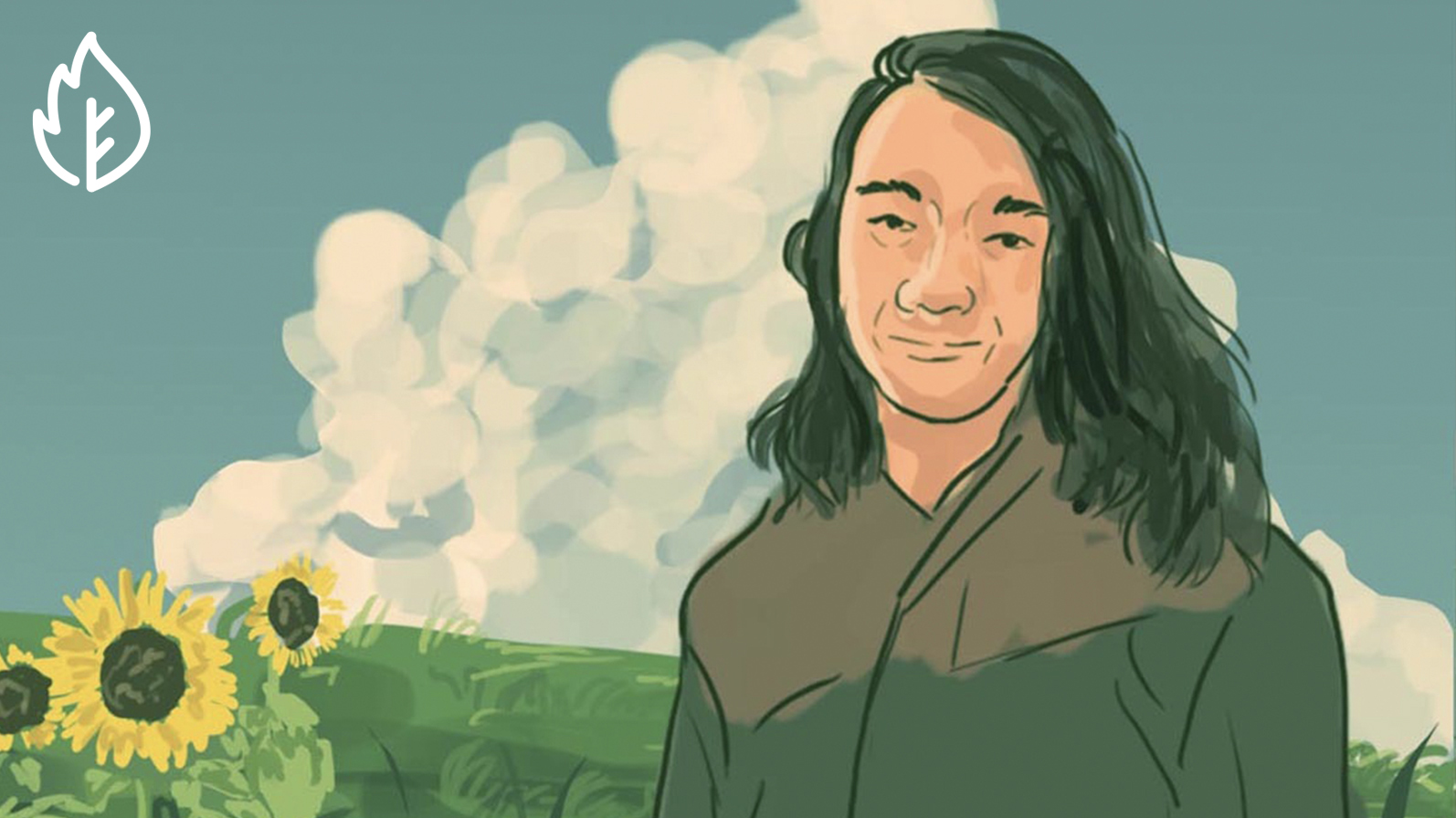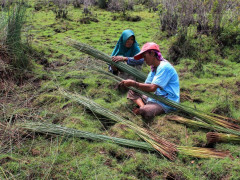When the Smoke from Forest and Land Fires Adds to the Complicated Handling of COVID-19 in South Kalimantan
By Donny MuslimGrowing Amidst the Crisis
Why are you interested in farming?
I became aware of farming when I was in junior high school, I saw my grandmother planting and harvesting a variety of vegetation. I was curious about why some people can successfully cultivate plants and others fail at it. I initially also tried it as well but failed. However, I was elated when I finally succeeded. As time passed I realized that my favorite thing does so is maintaining and caring for something. It makes me feel relaxed and comfortable.
Before this, I was also active in the Sekolah Tani Muda community. We learned about agroecology agriculture which aims to build agriculture sovereignty that is aligned with nature, without generating a lot of carbon emission.
After graduating in November 2019 and returning to my village in January 2020, I tried to apply for several jobs but none of my applications were successful. I felt very stressed out and started farming. Sometimes I think about the future: 20 years of working, unable to save money because the price of land continues to increase. Even if we already have the land, the current climate change makes farming impossible. Therefore, my interest was also fueled with urgency.
What challenges did you face whilst farming?
It was very difficult. Farming is extremely challenging as there are many challenges. I started farming during the pandemic when the public’s purchasing power was declining because agriculture is essentially a business. My income for the last year was very low. I planted choy sum but the price offered for it was only Rp 400 per kilogram. I also tried to plan rice, but the price offered was only Rp 3,800 per kilogram.
The greatest challenge was that the labor and capital required were not worth the profit and risks incurred. On the other hand, the profit for other products is significantly higher than the capital. The calculations indicate that farmers do not receive a daily wage and their labor costs are oftentimes not considered as part of the production costs. As a result, we rarely see wealthy farmers, their possibility of gaining wealth is equivalent to gambling, such as in the case of chilis. Even then, they only profit once and suffer losses five times.
Nowadays, the cost of farming is higher hence farmers will take out loans and have difficulties in paying the installments. I also had to take out a loan and have suffered a loss in the last two seasons. Farmers will continue to suffer a loss if no changes are made to the system.
In your opinion, what causes these challenges?
First, the trading system. Indonesia’s market involves many actors. Starting from farmers, collectors, market vendors, small traders, and lastly consumers. Each of these parties will take their profit. Middlemen usually play a role in the distribution and do not offer a price that is equivalent to the work carried out by the farmer. As a result, the farmer is unable to gain profit from the production, only the middlemen and the landowner would be able to gain profit.
Second, there is inequality in land ownership and tenure in Indonesia. In Java, many farmers do not own land and have to work with landowners. One hectare of land costs approximately 15 million to 30 million per year. The land rent price can be 30% - 50% of the total production cost, hence it is a very costly component.
Third, the climate crisis. La Nina causes high precipitation and some plants have become more vulnerable to pests and diseases.
For example, in the past, we can refer to the Orion or Crux, as well as the migration pattern of several insects. A large number of grasshoppers indicate that it is rain season. On the other hand, a large number of dragonflies indicate that the dry season will soon arrive. However, this is no longer relevant as the changes are very extreme.
Unfortunately, the climate crisis is rarely discussed in Indonesia, especially by the relevant ministries. However, the farmer also realizes and is aware that the climate has experienced changes.
What do farmers use as a reference nowadays?
Nowadays, the calculations have slightly changed. In the past, we would wait for the first rain season during the Muharram month to plant rice as it is believed to be the appropriate rhythm and humans can adjust. On the one hand, nature experiences changes, however farming methods have also changed since the green revolution. As a result, the social patterns typically used for farming have been disrupted.
To what extent have the government policies supported the welfare of farmers?
The policies have declined. The government's current focus is on food estate and supporting farmer corporatization, where farmers have to rely on companies selling basic needs.
Are any of the large-scale companies involved in the cultivation? Only for the case of palm oil. This is extremely rare for food crops as the majority of them choose the partnership scheme. Farmers plant, companies become the off-taker. Companies are aware that cultivation will not generate profit, it requires large capital but takes a long time to generate profit.
We used to have a Village Unit Cooperative, but this was not successful in our case. This is because the government often takes approaches that eventually rely on patronage and do not realize the different classes and different interests among farmers.
For example, a member of a farmer group is often trusted and has power. He/she can end up leading the surrounding community although he/she is an elite or landowner with different interests than the farmworkers or small-scale cultivators. This has resulted in the government's unsuitable agriculture narrative. Oftentimes, when the government provides equipment, it falls under the ownership of the landowner.
What is an ideal agriculture system in your opinion?
Our agriculture system strongly relies on weather and the environment. Ideally, we should be able to build an agriculture system that is more resilient against the impacts of climate change. It would be even better to have mitigation measures, low carbon agriculture, improvement of trade systems and land regulations, as well as the sustainability of cultivation to consumption.
If the government is willing to take a bold step, they can issue local regulations or laws concerning limits on land rent cost and land redistribution efforts. Second, the government can establish a trading system through the locally owned enterprise (BUMD) or state-owned enterprise (BUMN). Although in reality, SOEs can be more predatory than the middlemen.
Are there any community initiatives or alternative systems that we should support?
Several farmer groups are trying to build their market. I'm also trying to do this through Community Supported Agriculture (CSA) which enables direct contact between farmers and consumers. Many collective gardens have also been built in several cities. This needs to be supported because it supports a local food system.
What message do you have for Agriculture Krida Day?
Farmers, the youth, and society have inherited a very complex agricultural problem. We have to change now, otherwise, we will all be in danger. I think there is still a lot of room for improvement. For example, technology can be very useful to solve social and agricultural problems.
However, the expected results will be greatly influenced by how we position farmers, i.e. as objects or as empowered people in the system.




